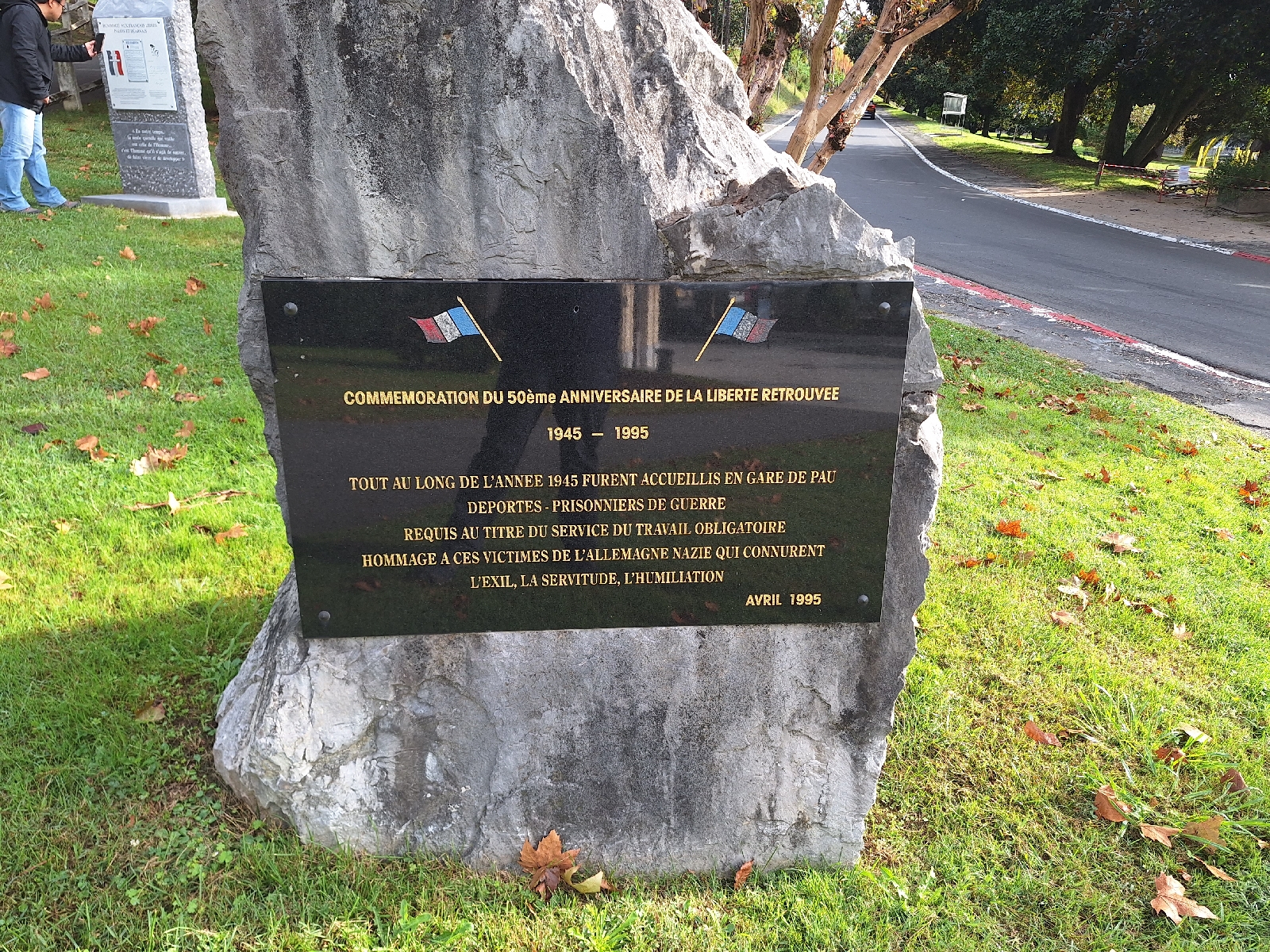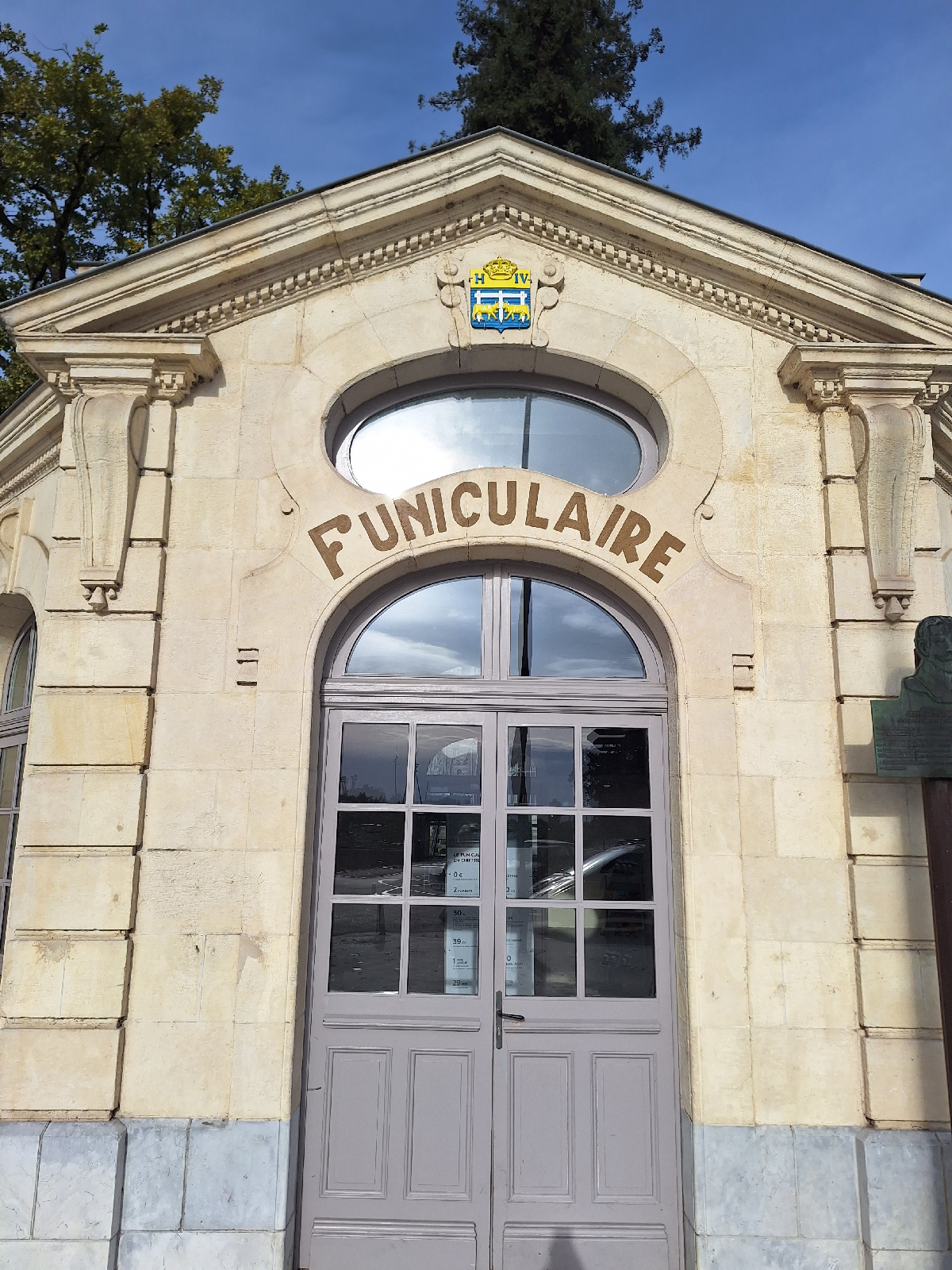October 21, 2023
The train from Toulouse to Pau passes just north of the Pyrennees. The rising sun hit the mountain peaks before slowly spilling into the valleys below.
Just outside Tarbes was an incongruous site: past cows in a field was a fleet of A380 double decker aircraft in different airline liveries (e.g., Lufthansa, Air France, Etihad). The aircraft were flown here when Covid began and the very large aircraft became redundant. Tarbes was a former NATO base, so they have a long runway, few commercial flights, lots of aircraft parking space and a location relatively close to Airbus headquarters in Toulouse.
Further on, the church at Lourdes is visible just south of the rail line. The Virgin Mary appeared here, and the Church has a large crown outside, marking the pilgrimage site.
Arriving at Pau (1), I was greeted by a good friend and her husband who live here. We all soon caught the local train heading south to Bedous (2), higher up in the Pyrenees, on a quiet single-track line (3). Following the route of the Gave D'Aspe (4), the valley narrowed and the train slowed to a crawl (10 kph) as we passed through the construction zone approaching Bedous.
The D'Aspe valley widens here, with the north-slanting alluvial plain about 3.5 miles north to south and 1.5 miles east to west. The oblong bowl shape is surrounded by steep mountains and has one town (Bedous) and 5 villages, all separated by pasture land. Rising above the valley floor near the south end of the basin is a small peak called Le Poey. We put on our hiking shoes and walked to the Bedous town square, where we picked up the trail. Following roads through the town heading south, the trail eventually petered out to a narrow track between sheep pastures. Cow bells rang softly in the surrounding countryside.
After passing through the village of Jouers, the well-trodden trail began rising steeply above the valley floor toward Le Poey. A small plateau a short way up offered a picnic table and good place for a rest. The hill is covered with low ferns and brambles, so the views were continuous. After some switchbacks higher up, we reached the cross-topped summit, about 700 feet above the valley floor. The views invited lingering and we watched the changing clouds casting shadows on the valley below. Parachuters were jumping off some nearby cliff and slowly drifting on the updrafts to the valley floor below.
Descending through Accous, we found a bar serving coffee near the parachuters' landing spot. As the sun fell behind the mountains west of the valley, we walked north down the valley along a dirt track paralleling the former railway right-of-way. Spying a large herd of sheep approaching, we were grateful when they turned just before reaching us (5). Approaching the hotel, a cyclist with a long stick rode by followed by a flock of running sheep; the cyclist was a shepherdess. My friends were glad I had suggested a visit here (6).
At the hotel, I enquired about the sauna in my pidgin French (7). The owner started the wood fire in the sauna and told me to come back in 25 or 30 minutes. After a 5 1/2 mile hike with an 860 foot elevation gain, the sauna was relaxing. As I stood on the deck drying in the cool evening air, the light drained from the valley and the last train of the day passed by on its way north down the D'Aspe valley.
(1) Pronounced somewhere between "poe" and "poo."
(2) The line formerly went to Spain through a 5 mile-long tunnel at the Pyrennees summit. A derailment in 1970 destroyed a bridge on the line, putting the line out of use. Service to Bedous has only recently been restored.
(3) Pronounced more like Spanish ("Bay-doos") than French.
(4) "Gave" (pronounced "gahv") is used in the local dialect of the Western Pyrenees to refer to a fast-flowing river.
(5) Whatever breed of sheep these were, both males and females had horns.
(6) They had never heard of Bedous before I suggested we visit. All I knew about the town was:
• the train line ended here,
• there was hiking in the valley (i), and
• the former train station had been converted into a hotel.
(i) A pre-teen boy got off the train at Bedous lugging a backpack at least as big as himself.
(7) Responding in very rapid (to me), French, I asked him "lentement s.v.p." (slowly please) at which he smiled, began talking at the speed of light, and laughed. He then spoke to me as if I were a dim-witted three-year old; just right for me.
First light on the Pyrenees
The pilgrimage church at Lourdes glimpsed from the train
Vintage-inspired reading lamp on the local train to Bedous
Bedous train station, now a small hotel
Start of walk/hike at Bedous main square
Trail through Bedous
Up the valley on foot
Jouers, next village south
We had to scramble up the berm to circumvent a closed gate
Fingerpost pointing the way to Le Poey in the background
Whimsical door at landing with picnic table
Views from landing
Higher up from Jouers
Accous, nestled in the valley further south
View across the Gave D'Aspe valley
Up the valley to the east
Summit cross, Le Poey
Looking east up La Berthe valley on the descent
Accous
Sunset shadows on east side of Vallée D'Aspe
Local patois below standard French looks a lot like Spanish. Spain is about 7 miles south (as the crow flies) over the mountains
Luckily, the sheep turned before they reached us
Le Poey in foreground. Note the brown vegetation (mainly ferns and brambles), while the deciduous trees have not yet begun to change color.
Sheep running to keep up with shepherdess on bicycle
Back at Bedous
Last train departing for Pau
Contented cat at dinner enjoyed morsels of duck, trout, & cheese, but especially liked the lamb.





































































